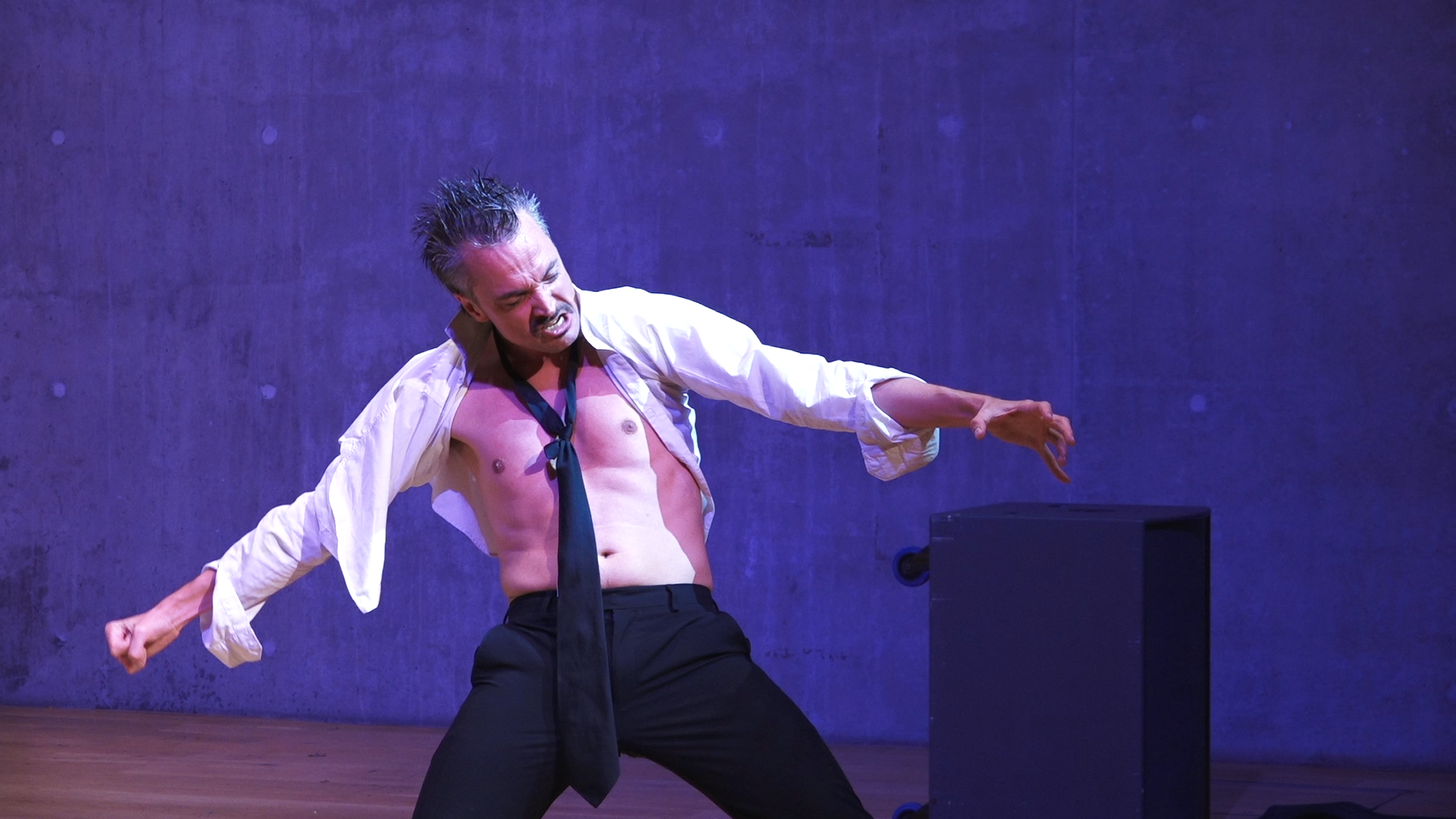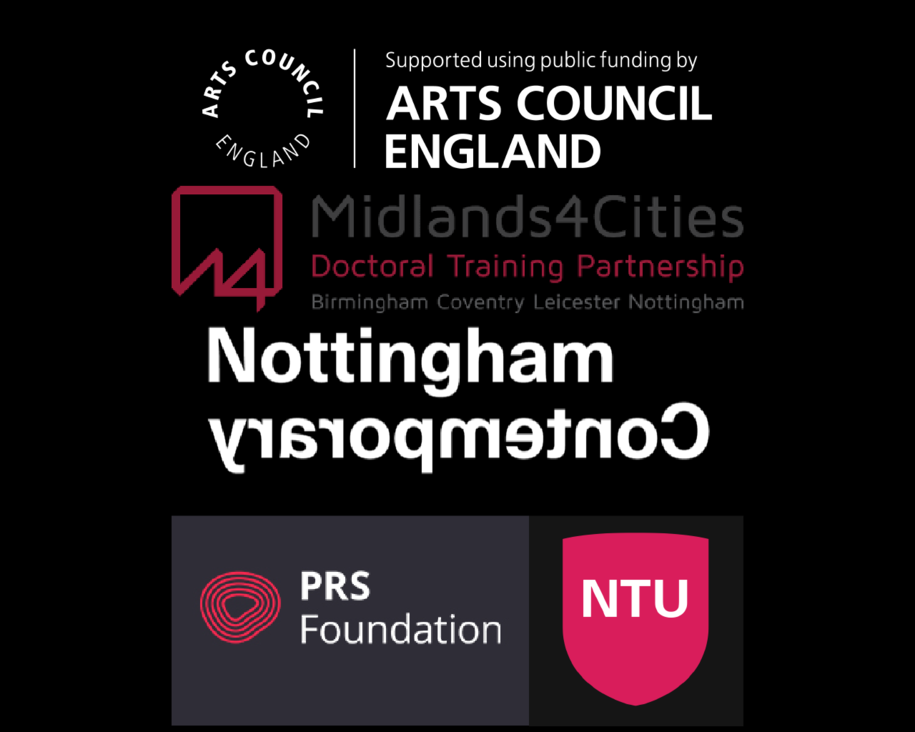About: This is the landing page which includes an overview of the practical research for the PhD research.
Video: On this page, you can view the video documentation of Eight to Infinite, from the live-streamed cut, and each of the individual camera feeds.
Music: listen to all three movements from Afrodeutshce's composition which response to Grunow's and Oram's historical theories.
Score: This matrix shows each movement with its visual score, and the parts of harmonisation theory and Oramics with graphic and audio described representations
Q&A: The live-streamed cut of the Q&A section of Eight to Infinite, chaired by Alex Jovčić-Sas.
Bios: Brief biographies from Grunow, Oram, Afrodeutsche, Alex Jovčić-Sas, and Martin Tomlinson.
Eight to Infinite refers to a development of a compositional practice that was used in order to create the music used for this project. Eight notes are used in traditional western diatonic scales. The first theorist encountered in this research, Gertrud Grunow, increased this number to twelve notes, using chromatic scales to compose atonal music which linked to colours and emotions. The second theorist, Daphne Oram, further increased the number to an infinite possible number of possible electronic frequencies by creating her own synthesiser called the Oramics Machine. Eight to Infinite describes the progression of collating and working with both of these theories in order to use contemporary compositional tools to create new music which responds to these historical theories.
Eight to Infinite is a collaborative project between PhD Researcher, Alex Jovčić-Sas, and Electronic composer, Afrodeutsche. As part of Afrodeutsche’s contribution she brought in dancer and choreographer, Martin Tomlinson to engage with the final sound work through a performative work. This collaboration was the culmination of 10 months commission work with Afrodeutsche, which aimed to showcase two historically marginalised composers, Gertrud Grunow and Daphne Oram. Both Grunow and Oram used optical methods to create music. The composition for Eight to Infinite respond to their archival narratives by combining historical sources with contemporary practices. Eight to Infinite is a practice-led research event which accompanied Jovčić-Sas’ PhD research, which aimed to undertake art historical and curatorial research into Grunow and Oram. Eight to Infinite took place on the 7th October 2021, in the Space at Nottingham contemporary. Eight to Infinite was generously funded by Arts Council England, Midlands4Cities, Nottingham Trent University, Nottingham Contemporary, and PRS Foundation.
Eight to Infinite contributes a practice-based testing space for how to show elements of historical practice blended with contemporary compositional tools, in a live event environment, in a curatorial process called parallel canonisation. The initial research was undertaken by exploring both Grunow and Oram to extrapolate their two theories, harmonisation theory, and Oramics, and to build a way in which to use their theories in contemporary practice. Eight to Infinite was then used as a method which contributed to a discussion within the written thesis, titled Locating Grunow and Oram after celebrating the Bauhaus Centenary: Using parallel canonisation as a curatorial method to re-establish marginalised figures.
Grunow’s harmonisation theory, and Oram’s Oramics presented methods of creating music that connected the physical body, to the mind, to a spiritual place in which the participant could achieve a greater understanding about themselves. Both women have been marginalised by the institutions that were supposed to represent them. The Bauhaus removed Grunow from their staff in 1923 due to mounting political pressure from the far-right government in Weimar; used as a scapegoat to escape a reputation for being a debaucherous school for parties and communist ideology. Similarly, the BBC showed little interest in the work that Oram was producing, allowing her only a small amount of freedom to develop her own distinct theory due to being mired in traditional musical practices.
Grunow and Oram were innovative composers who examined ways of making music that abandoned constructs of harmony and tonality, looking to examine how optical stimuli could be used to create music. Grunow did this through an intricate system of training with colour and movement by which the user could connect to the spiritual world through a deeper understanding of emotion as a creative force. Oram created a method of sound synthesis that was ahead of her time and highly complex, prefiguring future developments of digital composition. Oramics allowed the user to have complete control over the sonic output, a process that connected to the users’ own spiritual understandings. Their practices are under-researched in relation to the emotional and spiritual effects that they had on those who engaged with them, and they remain largely unknown as music practitioners.
Curator: Alex Jovčić-Sas
Music: Afrodeutsche
Choreography: Marton Tomlinson
Video Producer: Kat Brown
Vision Mixer: Jake Sharpe
Camera Operators: Kat Brown & Rowena Brett
Lights: Jim Bower
Photography: Greg Eden, Canan Batur, & Alex Jovčić-Sas
PhD Supervisors: Cüneyt Çakirlar, Danica Maier, & Sam Thorne
This project was supported by Arts Council England, Midlands4 Cities, and PRS Foundation
In-kind support from Nottingham Contemporary & Nottingham Trent University












